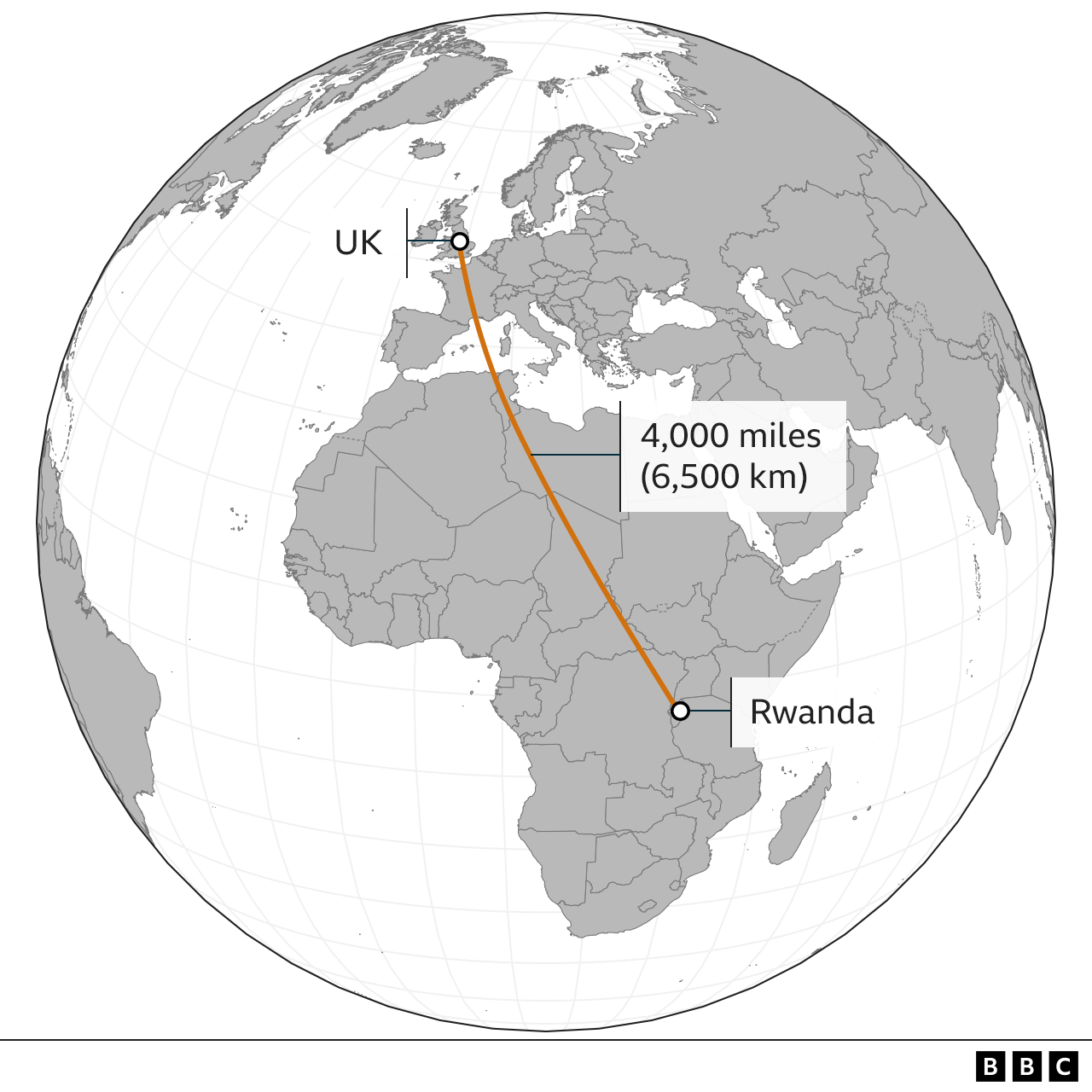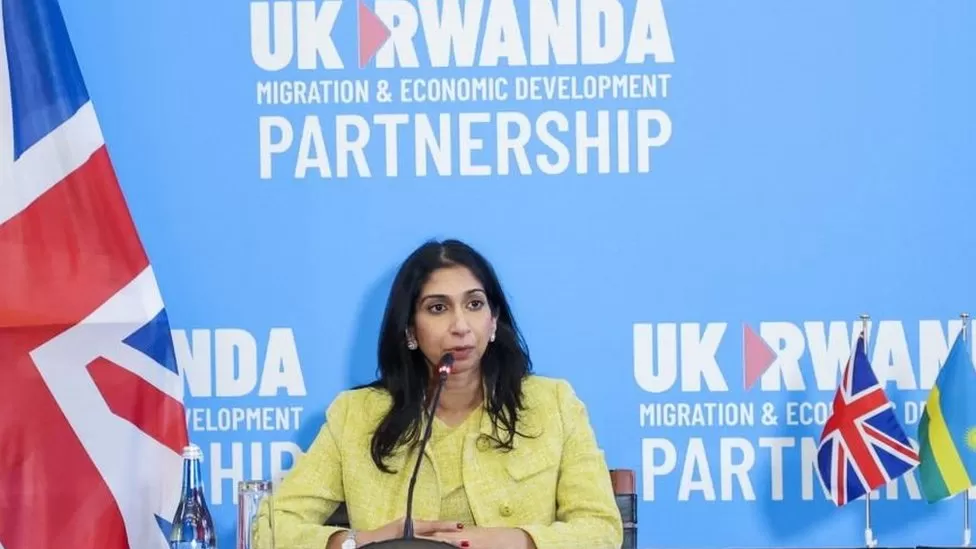The UK government wants to send some asylum seekers to Rwanda.
But the the policy is unlawful, the Court of Appeal has ruled. That decision could itself be challenged at the Supreme Court.
What is the Rwanda asylum plan?
The five-year trial – announced in April 2022 – would see some asylum seekers sent to Rwanda on a one-way ticket, to claim asylum there.
They may be granted refugee status to stay in Rwanda. If not, they can apply to settle there on other grounds, or seek asylum in another “safe third country”.
The government says the plan will deter people arriving in the UK through “illegal, dangerous or unnecessary methods”, such as on small boats which cross the English Channel.
More than 45,700 people used this route to come to the UK in 2022, the highest figure since records began.
Small-boat crossings decreased slightly in the first few months of 2023 but numbers could rise again in the summer.
No asylum seeker has actually been sent to Rwanda so far. The first flight was scheduled to go in June 2022, but was cancelled after legal challenges.

Is Rwanda safe and is the scheme legal?
In June 2023, the Court of Appeal overturned an earlier ruling by the High Court that the Rwanda plan was lawful.
The judges ruled that the east African nation is not a safe third country because of “deficiencies” in its asylum system which mean that some claimants could be sent back to their home countries, where they might face persecution.
It said that “unless and until” those deficiencies are corrected, removal of asylum seekers to Rwanda is unlawful.
The ruling also said that the Rwanda policy breaches Article 3 of the European Convention on Human Rights, which prohibits torture and inhuman treatment.
It was not a unanimous decision. Two judges agreed to reverse the High Court decision but a third did not.
The judges said their decision does not imply a view about the “political merits” of the policy.
Asylum Aid, the charity which brought the case against the government, said the judgement was a “vindication of the importance of the rule of law and basic fairness when fundamental rights are at stake”.
The UN’s refugee agency, which advised the court on matters of international refugee law during the appeal, also welcomed the ruling, and urged the UK government to “pursue other measures” instead.
But Home Secretary Suella Braverman called the judgment “disappointing”, and Prime Minister Rishi Sunak confirmed the government will seek permission to appeal the decision to the Supreme Court.
While legal proceedings continue, flights still cannot take off for Rwanda.
- Ministers warned about Rwanda rights, court told
- Land of safety – or fear? Why Rwanda divides opinion
How many people could be sent to Rwanda?
The UK government previously said “anyone entering the UK illegally” after 1 January 2022 could be sent, with no limit on numbers.
Rwanda says it can process 1,000 asylum seekers during the trial period, but has capacity for more.
Under the deal, Rwanda can also ask the UK to take in some of its most vulnerable refugees.
But in October 2022, Privilege Style – the airline which was scheduled to take asylum seekers to Rwanda – withdrew from its Home Office contract, after a campaign by refugee charities.
At the time the Guardian reported that two other airlines which had previously conducted deportation flights had also ruled out participation in the Rwanda scheme.

How much will the plan cost?
So far the UK has paid the Rwandan government £140m for the scheme but it has not provided an overall cost.
An economic-impact assessment prepared for the government’s Illegal Migration Bill estimated that removing each individual to a third country, such as Rwanda, would cost £63,000 more than keeping them in the UK.
That figure is the difference between the total cost of removing an individual – estimated to be £169,000 – and the £106,000 spent on housing support if they remain in the UK.
The £169,000 total includes a payment to the third country of around £105,000 per person, as well as £22,000 for flights.
The Home Office said no cost would be incurred if the policy deterred an individual from entering the UK illegally.
But it said it was “uncertain” how many people would be deterred because the policy was “novel and untested”.
The UK’s asylum system costs £3bn a year. Almost £7m a day is spent on hotel accommodation for refugees and asylum seekers.
Critics say the daily cost is so high because of the time taken to decide on applications, and a ban on asylum seekers working while waiting for confirmation of their status.
What is an asylum seeker?
The UN Refugee Agency defines an asylum seeker as someone who has applied for shelter and protection in another country.
A refugee is a person who has fled conflict or persecution in their own country.
The legal rights of refugees are protected by international law. However, it is up to host countries to decide whether an asylum seeker is granted refugee status.
In 2022, the UK received more than 89,000 asylum applications, the highest number for 20 years. Of these, more than 23,800 people and their dependants were granted a form of protection.
